A dryer with no heat

By Jimmie Slemp, WECA Instructor and Lab Manager
Instructor Jimmie Slemp checks in with another episode of "Notes from the Field." If there were any names involved, they would have been changed to protect the innocent and not-so-innocent.
(Note: Always remember to follow all safety precautions and use appropriate PPE Personal Protective Equipment when working around or near electricity.)
Often I tell my students that knowing Ohms law is an important part of being an electrician. A meter can test a circuit, but without ohms law how can you interpret what the meter is telling you?
Recently I was faced with a dryer that was not producing any heat. When I had asked a recent class what I should do, they suggested “I call someone”. Yeah... that ain’t going to happen.
I grabbed a multi-meter and proceeded to take a look. Although I did not have a diagram I was pretty sure I would find one inside one of the dryers appliance panels. Well sure enough there was a diagram inside the back of the control panel rear cover. Once I had a diagram, I was really ready to get serious. I began to look over the diagram and thought let’s not forget the basics - is the dryer getting power? I confirmed that the dryer receptacle had the correct voltage but I was in for a little unexpected surprise when I went to where the cord attached to the back of the appliance.
We had purchased the dryer new and paid to have it “installed.” Aside from them delivering the dryer and putting it in place “installation” included putting on the cord. I was surprised to find that the 4-wire cord had been installed without a cord connector and even worse - the ground wire was not even connected. Not only had they not connected the grounding conductor they had left the bonding strap connected to the neutral. I guess they (the installer) did not know the difference between a 3-wire and 4-wire cord even though there was a sticker with instructions posted right on the back of the dryer.
See Figures 1 & 2. Can you name the code violations? Article 400.10 and article 250.140 come to mind.
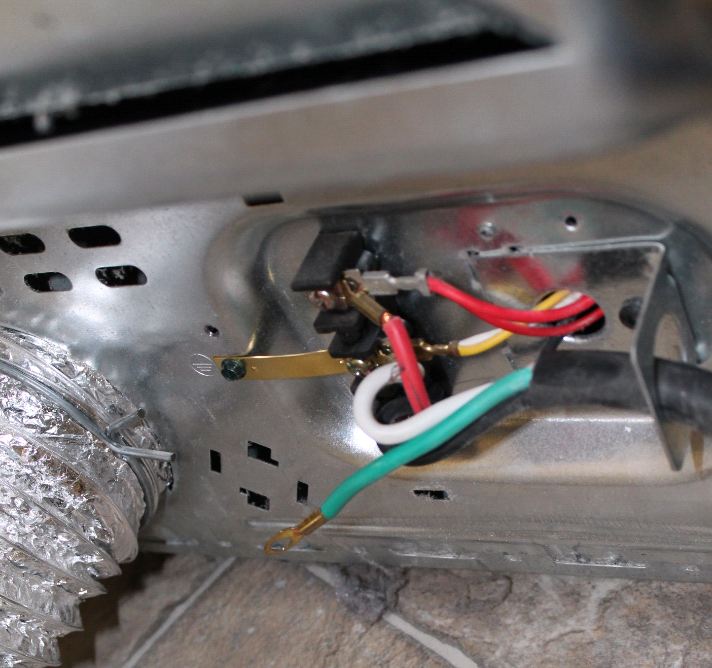
Figure 1
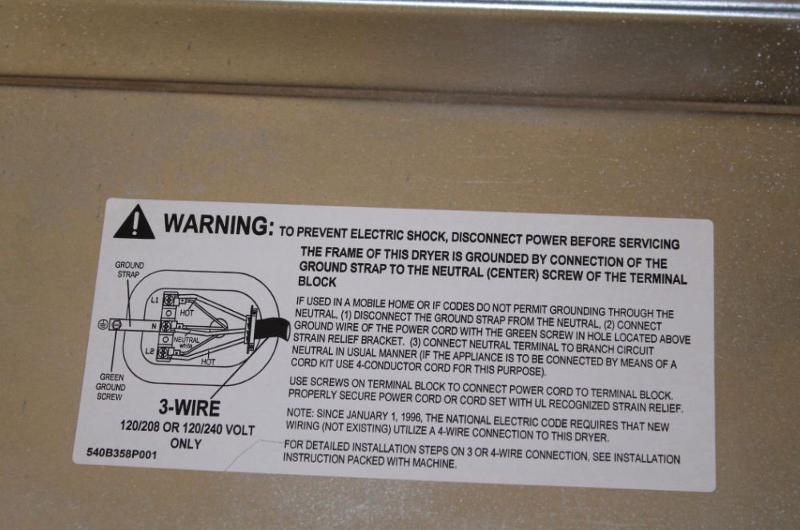
Figure 2
After correcting the cord snafu I proceeded to move on to check the most obvious cause of the dryer not producing heat -- the dryer heating elements. From the back of the control panel I was able to do a quick continuity check of the elements (there are two) and found that there was no continuity. Unfortunately this test only meant that I was going to have to further disassemble the dryer. The following day I took out the dryer drum which exposed the elements. See figures 3 & 4.
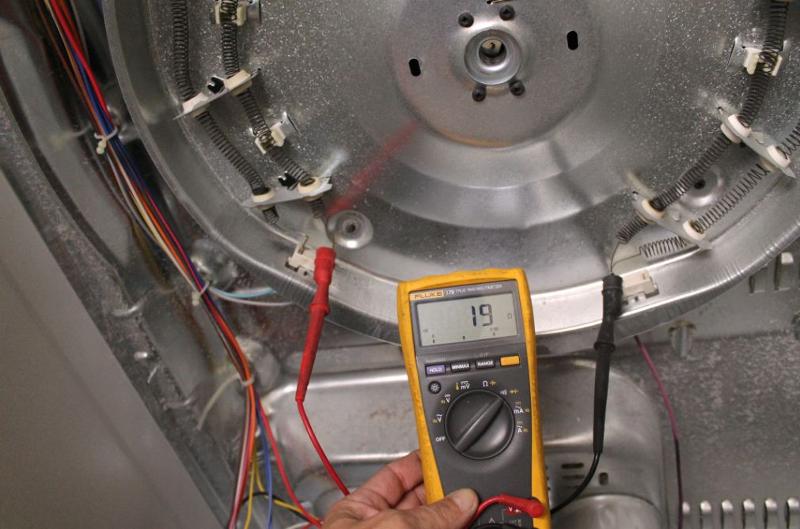
Figure 3
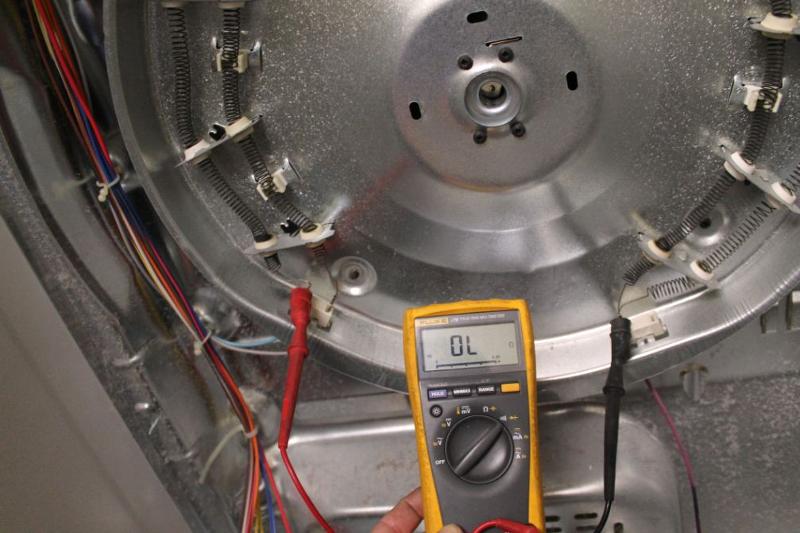
Figure 4
Question: Which of the elements is the bad one? Figure 4 shows the bad element. The meter is showing infinite resistance which means there's a break in the element. Figure 5 below shows the actual broken heating element.
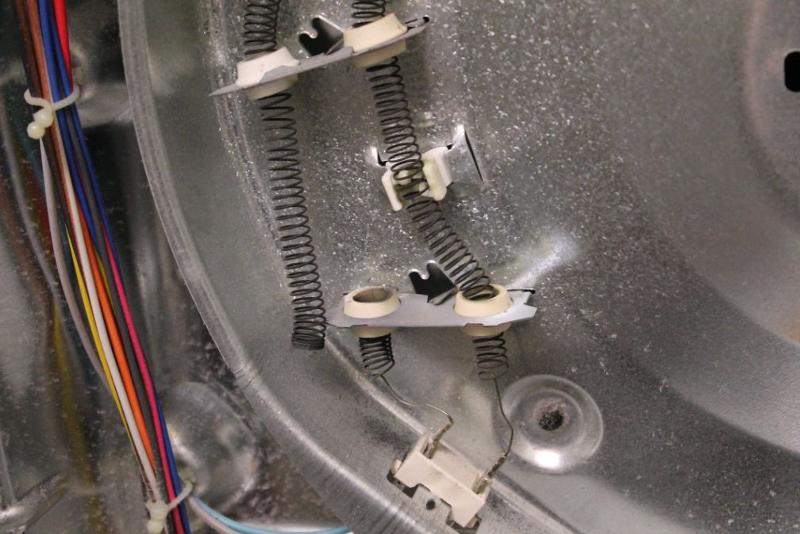
Figure 5